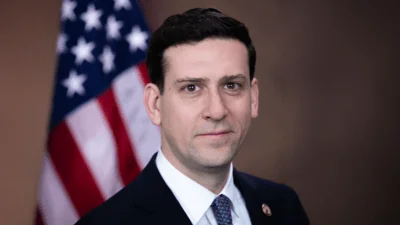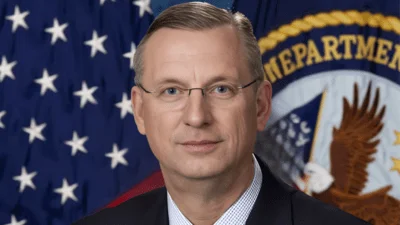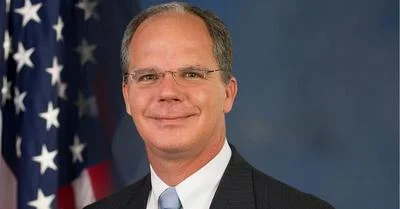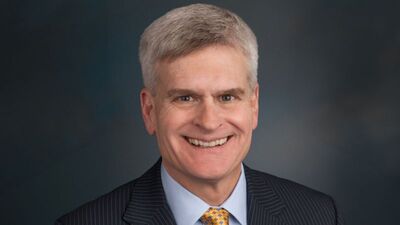Dear Secretary DeVos:
I write to express my continued frustration and disappointment with the Trump Administration’s failure to act to address the issue of gun violence, including with respect to protecting our schools. In particular, I was dismayed by your response to Senator Leahy at the Senate Labor, Health and Human Services, Education, and Related Agencies Appropriations Subcommittee hearing this week, stating that the role of guns in school violence “is not part of the [Federal Commission on School Safety’s (the “Commission")] charge, per se." This statement contradicts the Administration’s previous statements, your communication with me in our March meeting, and this country’s core value to do all that we can to protect our children. While the Commission continues to delay meaningful efforts to address gun violence, our nation’s children are paying the price.
In my March 15 letter to you, to which I have yet to receive a response, I expressed concern that the Commission would be used to shift the national conversation about our gun violence epidemic away from meaningful gun safety reforms, which the vast majority of people across the country support. I also expressed concern that in our private meeting, you could not assure me that the National Rifle Association (NRA) would not influence the Commission’s process. Finally, I asked that you ensure the public is engaged and able to participate in and influence the Commission’s priorities. Given your and the Commission’s actions over the past months, I am convinced this Commission is on the wrong path and is unlikely to produce any recommendations or actions that will reduce violence and save lives.
Your response to Senator Leahy, combined with Deputy Secretary Zais’ statement that the Commission will only consider “narrow aspects of gun ownership," makes clear the Commission’s lack of commitment to seek out and provide meaningful recommendations to keep children safe in schools. I believe meaningful solutions to the scourge of gun violence in schools, as well as in communities more broadly, include implementing universal background checks, banning high-capacity magazines and bump stocks, raising the age requirements to purchase firearms, and funding research into gun violence, among other strategies. Instead of limiting the scope of public dialogue, the Commission should allow parents, students, and other community members across the country to guide the Commission’s work. Shifting the focus away from guns only shines a spotlight on the tight grip the NRA has on this Administration and the Administration’s inability to listen to the voices of the people you claim to serve.
In addition to redefining the scope of the discussion, the Commission has intentionally diminished opportunities for public input. The initial meeting of the Commission did not provide an opportunity for members of the public to ask questions of the witnesses. In addition, the invitation to attend or testify at the Commission’s “public listening session" on June 6 was released in the Federal Register on June 5, just one day before the session, leaving too little time for many students, community members, educators, health care providers, and other key stakeholders to see the notice, make travel arrangements, and register for the event. While the Commission is expected to hold additional public meetings, I am concerned there will be again inadequate advance notice provided to potential participants. Finally, while you are the Chair of the Commission, you chose not to attend the public meeting, which is a telling demonstration of your disinterest in public input and dialogue. None of the four Cabinet secretaries tapped to lead this Commission attended its first official meeting.
I have a number of questions to better understand how this Commission can meaningfully address children’s safety in schools given the Administration’s limitations on the Commission’s work. To that end, please answer the following questions regarding the Commission’s work by no later than June 22, 2018.
1. How many people signed up to speak at the public listening session on June 6?
2. How many people spoke at the June 6 session? Please state the criteria by which speakers were selected.
3. How many people were placed on waiting lists or rejected from the public listening session?
4. How will you ensure students, community members, educators, health care providers, and other key stakeholders who were unable to speak at the public listening session are able to express their opinions to the Commission?
5. How will you improve outreach and advance notice of the subsequent three public listening sessions the Commission plans to hold?
6. Does the Commission intend to hold more than four public listening sessions?
7. Will you attend future public listening sessions? Are the other named members of the Commission expected to attend future listening sessions or meetings?
8. Was the NRA involved in setting the scope of the Commission’s work? Has any member of the Commission met with the NRA to discuss the Commission or its work?
9. Why does the Commission believe it is appropriate to narrow the scope of the Commission’s work to avoid addressing gun violence?
10. How did the Commission determine which “narrow aspects of gun ownership" were appropriate to address as part of the Commission’s charge?








